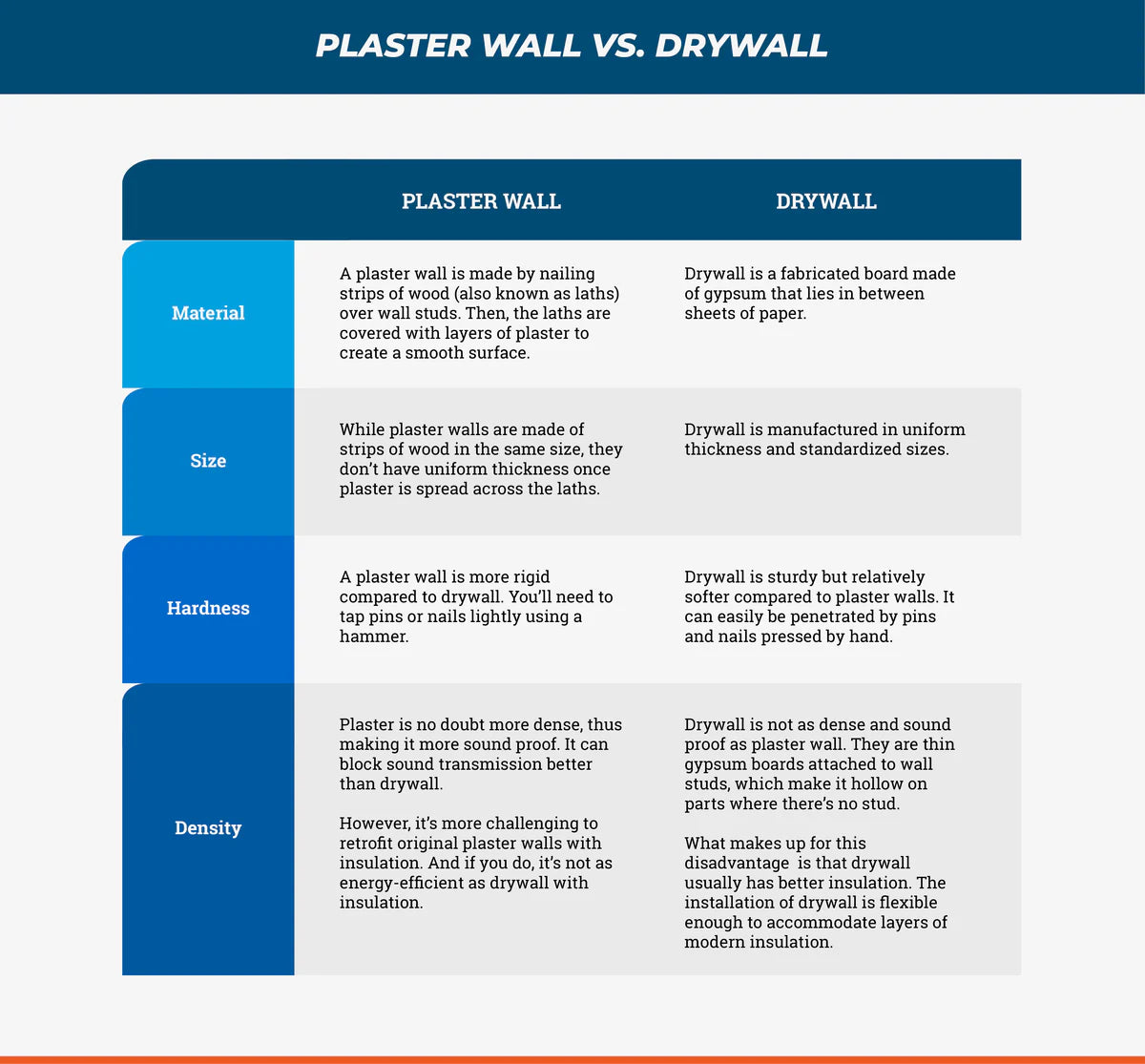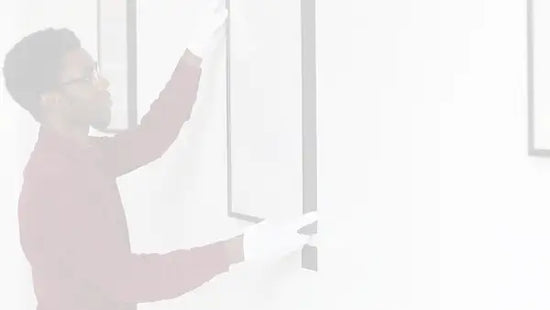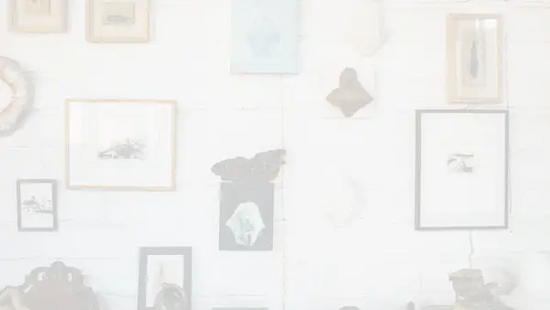If you’ve been following the Picture Hang Blog for a while, you’d know that choosing the right picture hangers involves knowing what wall type you have. But how is that possible if you don't know the difference between each type of wall?
Today, we’ll be talking about two types of walls: Plaster and Drywall.
Plaster vs. Drywall
First, let’s introduce you to both plaster wall and drywall. In this wall guide, you’ll be able to compare plaster and drywall based on their features and benefits.
Check out the eight differences between a plaster wall and a drywall below:
With this table, it's easy to compare both plaster and drywall at a glance. The two wall types are very different from each other in all aspects. But at the end of the day, it would be hard to tell them apart if you don't look close enough when it's installed.
How to Tell if You Have a Drywall or Plaster Wall in 5 Easy Ways
When you walk inside a room, there are some obvious things to see that give away what type of wall it is. You'll see cracks, texture, flaking paint, and even curves. After this section, you'll be able to identify which wall is which.
Here’s how:
Find out when your home was built.
As mentioned earlier, plaster walls were the people's choice before World War II. Even though drywall was invented in 1916, folks didn't use it in residential construction until the 1950s. Then, it eventually stole the spotlight from plaster walls after the '60s. Here's a quick guide that tells you what wall type you might have based on when it was built:
- Before the 1940s - most likely plaster wall
- 1950s-1960s - may be plaster or drywall
- After the 1960s - most likely drywall

If you notice, plaster walls have that old-fashioned home aesthetic. They are more flexible when you want curved or arched designs, thus giving a higher-end ambiance. Meanwhile, drywall has a minimalist look. It works best when you only want straight walls.
Knowing how old your house is the easiest way to identify your wall without moving a muscle. It’s not a guarantee, though, so if you want to be sure, check out the next tip!
Watch out for cracks and flaking paint.
Take a good look at your walls. It's easy to spot cracks and flaking paint, if there are any. These flaws will help you determine whether you have plaster walls or drywall. Drywalls often have no cracks, but if they do, you'll see them in smaller areas. You can find them in a place where a joint compound is used to seal seams or patch holes.

Plaster walls tend to have spider web-like cracks going in all directions. Aside from that, you might also see flaking paint.
In the plaster-dominant era, folks used oil paint. And sometimes, they coated latex paint over oil paint without using the correct primer. This is most likely the cause of the flaking paint, thus confirming that your wall is a plaster wall. If you’re still not satisfied with this way of identifying the wall you have, we’re sure you’ll like the next tip!
Do the pushpin test.
A pushpin test is what some experts do to find out what wall they’re working with quickly. Take a pushpin and press it on the wall using your thumb. If the pin pokes into the wall easily, that’s drywall. If it doesn’t, then that’s plaster. A pushpin can penetrate drywalls easily because they’re softer compared to plaster.
Meanwhile, lath and plaster walls won’t even budge with a thumbtack unless you use a hammer. As for nails, plaster walls tend to resist them because of the flexing of the laths in the wall. Sometimes, if you do get a nail into the plaster, the hole is slightly larger than the nail.

If you don’t have a pushpin, you can try knocking instead. Knock continuously going sideways. If you’re knocking on drywall, you’ll hear a hollow sound followed by a dense sound when you reach a stud. If you’re knocking on plaster, it will have the same thick sound all the way.
So, we’re down to our last two tips. If you want to see it to believe it, you’ll love the following ways of identifying what wall you have.
Look behind the wall.
Remove a switch plate or electric socket so you can take a peek and check the cross-section of the wall.

On the left, this is what the cross-section of a plaster wall looks like. You will see layers of plaster with no paper in sight. You may also see plaster that seeped out between the laths; we call them “keys.” On the right, there’s a layer of paper on either side of white gypsum. Additionally, any wiring behind drywall is enclosed by an electric box, unlike in plaster, where the wiring is loose.
Go to the attic or basement.
Sometimes, attics and basements are left unfinished. This means you can see the backside of the wall and confirm if you have plaster or drywall. If you see plaster keys, loose wiring, and lots of same-sized wood strips, that's a plaster wall. As you can see in the photo below, laths are nailed into studs and then covered with layers of plaster.

If you see wall studs standing vertically and spaced further from each other, that’s drywall. The spacing of the wood studs explains why the drywall's sound alternates between a hollow and dense sound when knocking in a horizontal direction.
You can also notice the electrical boxes for the wiring, as shown in the photo below.

Recommended Picture Hangers
Well, now that you know the difference between the two common types of walls, let’s check what picture hangers you can use for each wall type. All the art and picture hangers recommended below are available on our website and our Amazon store.
For Plaster Walls
For Drywall
Final Thoughts
Plaster walls and drywall are easy to tell apart because they are different in so many ways. It’s just a matter of familiarizing yourself with each wall type's look, flaws, features, and benefits. When you feel confident you can distinguish between the two.
What are you planning to buy today? Let us know in the comments!











Picture Hang Solutions
February 12, 2023
Hi Susan,
Thank you for your comment! This is an interesting question to ponder on. When you tried the knock test, did the knocking sound hollow all through out? If it sounds hallow, and considering that you are in a newer apartment building and that a push pin goes into your wall relatively easily, it might be drywall. But to be extra sure, you may ask the apartment owner or your landlord, or have it checked by a professional.
I hope this helps! If you have any other questions of concerns, please don’t hesitate to send us a message. We are always happy to help!
Sincerely,
Picture Hang Solutions